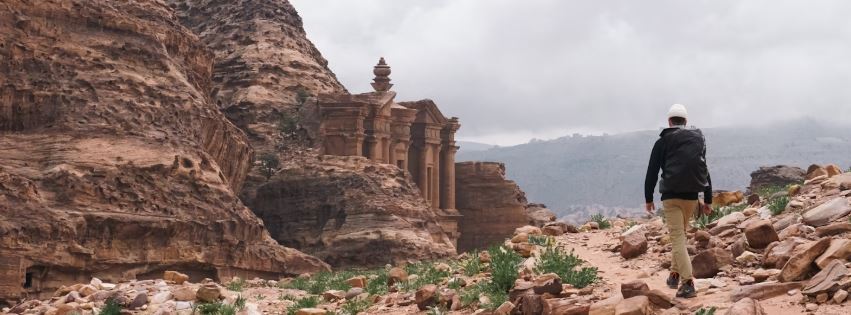
Petra : The Beautiful Rose City Carved in the Sandstone
Who knows that deep within the Jordan Dessert lies the ancient rose city? This ancient city is famous for a carved building on the sand cliff from the east to west Wadi Musa or Valley of Moses. The City of Petra was designated a UNESCO World Heritage Site in 1985.
The History of Petra
The name Petra originated from the Greek word meaning ‘Rock’, which perhaps replaced the biblical name ‘Sela. ‘ Referring to the Bible, the city of ‘Sela’ states that all the buildings and monuments in Petra belong to the Nabatean and Roman periods. This city was once the capital of the Nabateans, who had great power to rule from the far north to Damascus. Historical evidence shows that this city was occupied from the fifth century BC to the fifth century AD. After the occupation of Nabateans, centuries later, an Arab tribe took over the capital city. After earthquakes destroyed the city, which were obviously not the first, Petra ceased to thrive. In the 7th century, Islamic invasions occurred, and in the 12th century, the Crusaders’ activities were also noted here. After that, Petra remained unknown to the Western world. In 1812, the Swiss traveler Johann Ludwig Burckhardt rediscovered the city. Excavations in the city of Petra began in 1958 by the British School of Archaeology in Jerusalem. The ruins of Petra spread from the east, known as the Siq or Wadi Al-Siq, which is a narrow gorge. There is a large tomb named Al Dayr, or the Monastery; this tomb is the best-known monument in Petra. It is actually an unfinished tomb that was used as a church during Byzantine times. The excavations that began in 1993 uncovered more temples and monuments that illustrate the ancient life of Petra. There are many god and goddess statues carved from rock since the Nabateans worshipped Arabian gods and goddesses, as well as adhering to pre-Islamic beliefs. Names of Arabian kings are also carved in Petra, such as Aretas, the Hellenized form of Harith.
Locations in Petra
The famous locations in Petra city are the street of facades, the Renaissance tomb, the garden temple, the Corinthian tomb, and the theater.
The Street of Facade – is the row of monumental Nabatean Tombs which is carved on the southern side. On both sides of the street, there are a number of grindstones from Nabatean burial interfaces. This interface is believed to be the representation of the senior official or prince in the city.
The theatre – this building was built during the reign of King Aretas IV. The theatre can accommodate 4000 spectators with seven stairways to the auditorium and three rows of seats. The theater faces the great wall of tombs.
The monastery – this is the largest monument in Petra which is used as the meeting room of the religious associations. During the reign of King Rabel II, this monument was used as a church chapel and therefore named as Monastery.
The beautifully carved of monuments and tombs in sandstone have existed for more than two thousand years.
